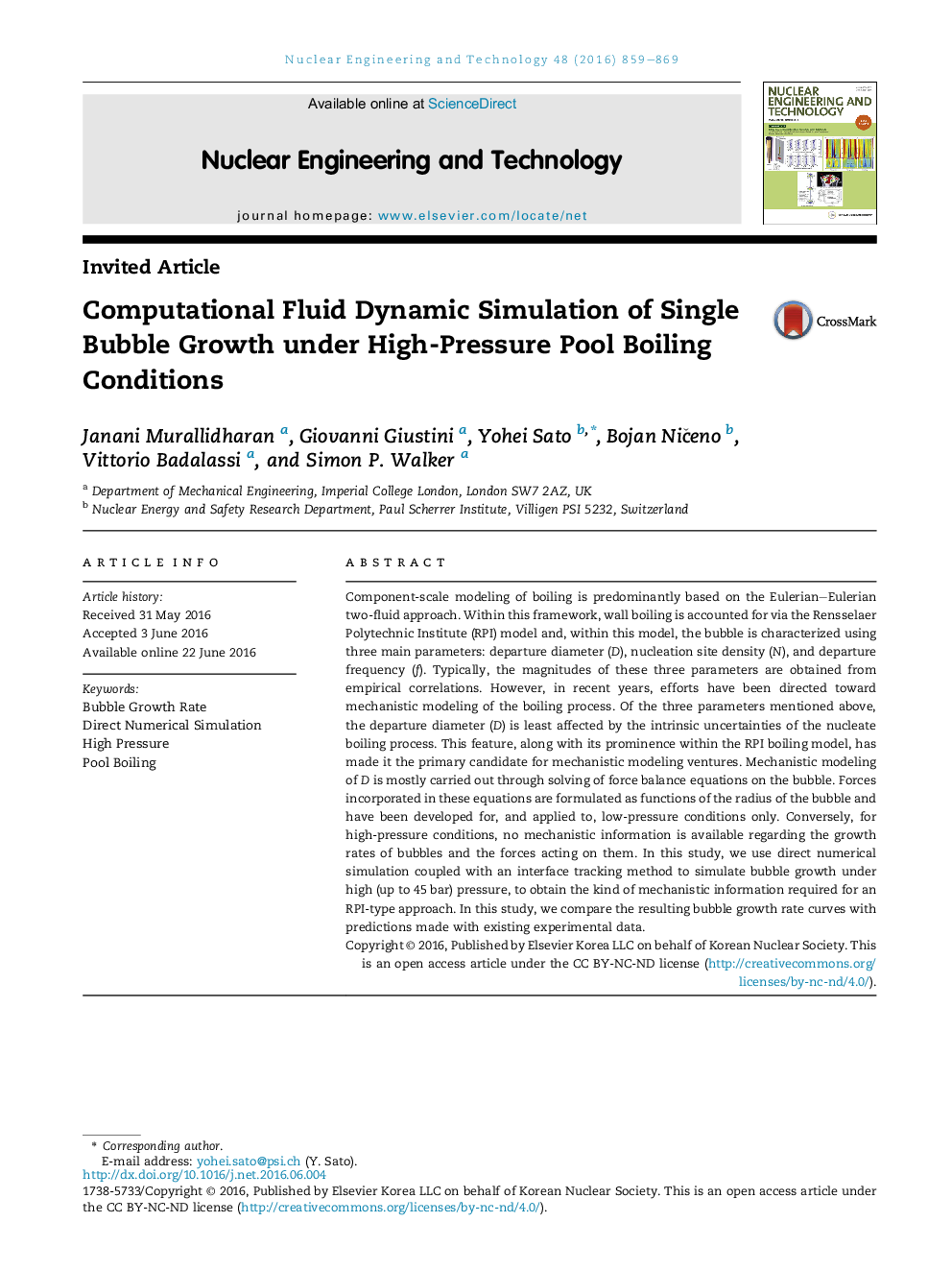| Article ID | Journal | Published Year | Pages | File Type |
|---|---|---|---|---|
| 1739827 | Nuclear Engineering and Technology | 2016 | 11 Pages |
Abstract
Component-scale modeling of boiling is predominantly based on the Eulerian-Eulerian two-fluid approach. Within this framework, wall boiling is accounted for via the Rensselaer Polytechnic Institute (RPI) model and, within this model, the bubble is characterized using three main parameters: departure diameter (D), nucleation site density (N), and departure frequency (f). Typically, the magnitudes of these three parameters are obtained from empirical correlations. However, in recent years, efforts have been directed toward mechanistic modeling of the boiling process. Of the three parameters mentioned above, the departure diameter (D) is least affected by the intrinsic uncertainties of the nucleate boiling process. This feature, along with its prominence within the RPI boiling model, has made it the primary candidate for mechanistic modeling ventures. Mechanistic modeling of D is mostly carried out through solving of force balance equations on the bubble. Forces incorporated in these equations are formulated as functions of the radius of the bubble and have been developed for, and applied to, low-pressure conditions only. Conversely, for high-pressure conditions, no mechanistic information is available regarding the growth rates of bubbles and the forces acting on them. In this study, we use direct numerical simulation coupled with an interface tracking method to simulate bubble growth under high (up to 45 bar) pressure, to obtain the kind of mechanistic information required for an RPI-type approach. In this study, we compare the resulting bubble growth rate curves with predictions made with existing experimental data.
Related Topics
Physical Sciences and Engineering
Energy
Nuclear Energy and Engineering
Authors
Janani Murallidharan, Giovanni Giustini, Yohei Sato, Bojan NiÄeno, Vittorio Badalassi, Simon P. Walker,
